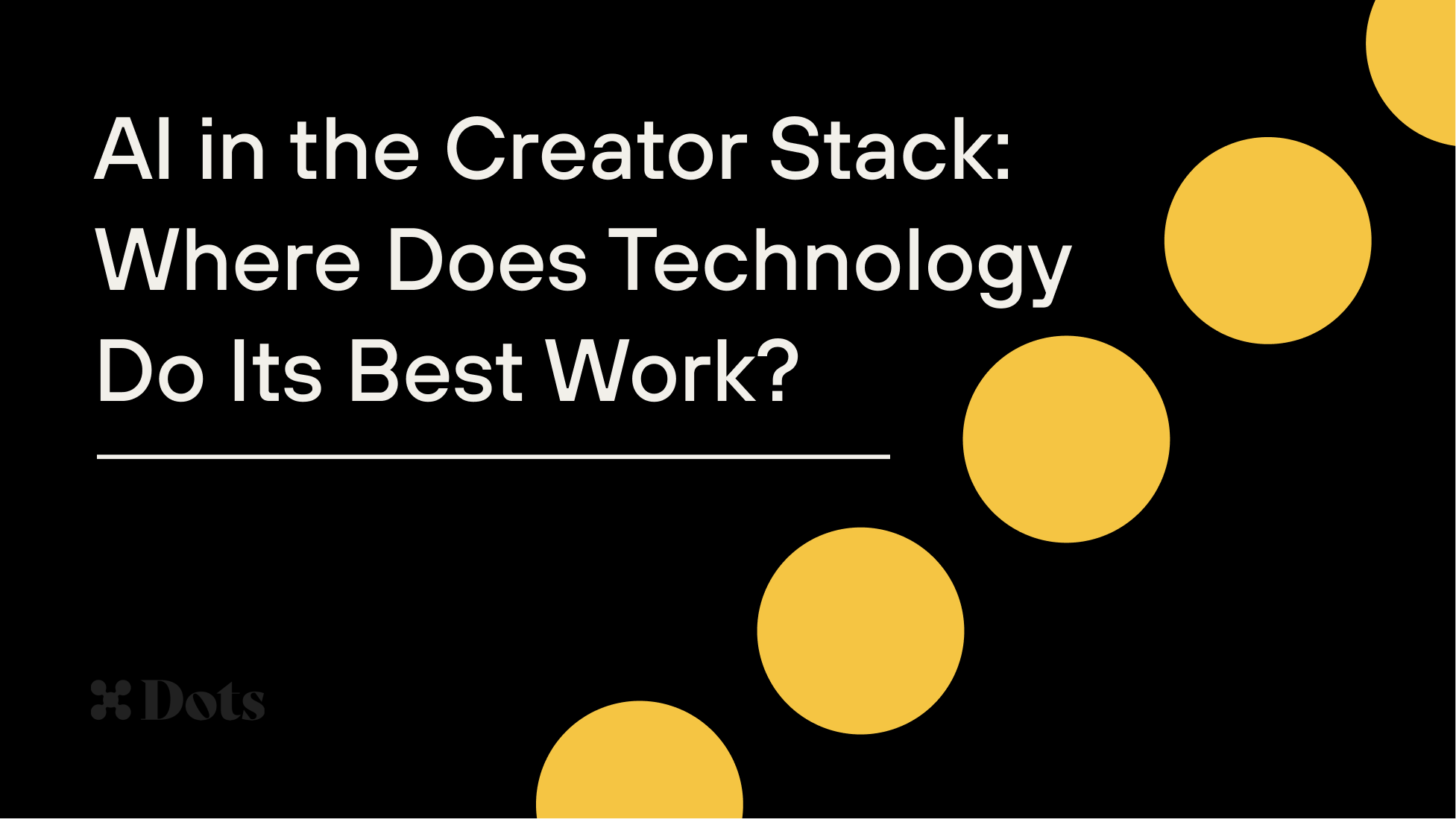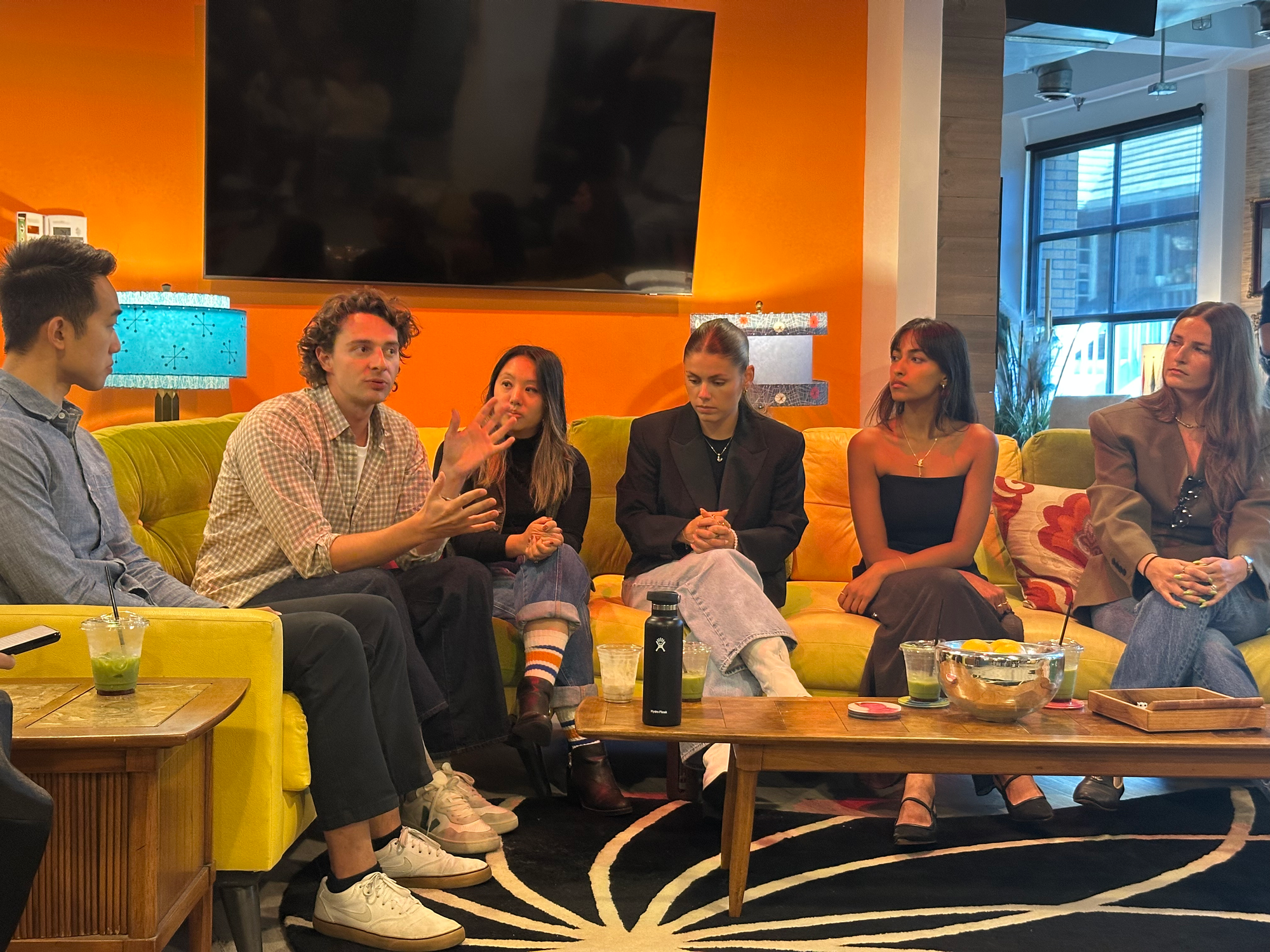AI in the Creator Stack: Where Does Technology Do Its Best Work?
At LA Tech Week, Dots hosted “AI in the Creator Stack,” featuring Locker, Beacons AI, Merazine, Stan, Superfiliate, and Hook & Anchor Media, all cutting through hype to reveal where AI truly creates value in the creator economy.

The creator economy has never moved faster or felt noisier. AI has become the default label on every product update, every pitch deck, every marketing tagline. But in a space powered by originality and trust, the real question isn’t how much AI you use. It’s about what it’s actually doing for you.
At Dots’ LA Tech Week panel on AI in the Creator Stack, leaders from Locker, Beacons AI, Merazine, Stan, Superfiliate, and Hook & Anchor Media broke down what’s hype, what’s working, and what happens when human taste, culture, and incentives meet automation.
From Automation to Autonomy
Mary Grace Scully, Head of Marketing at Locker, shared that the platform recently hit 700K collections and 13.5M products saved heading into holiday season (which Locker terms its “#WishlistSzn”). “People want their taste back,” she said. “They don’t want to be told what to love, they want tools that help them express what they already love.”
Sreya Halder, co-founder of Merazine and content creator, recalled gaining 40K users in 10 days through pure organic buzz. “It worked because it felt human,” she said. “AI can mimic tone, but it can’t create context. People can tell when something was made for connection, not clicks.”
Carissa Estreller, founder of Hook & Anchor Media and writer of The Digital Culturist, noted that the most effective brands are the ones mapping relationships across contexts: connecting how people talk, shop, and share. “The act of drawing those lines and building a kind of map is something AI still struggles with,” she said. “Brands that can see across categories, emotions, and moments win because they understand how people actually move through culture.”
That distinction, between using AI to amplify identity versus automate output, shaped much of the conversation.

Real Tools, Real Revenue
Across the panel, one theme kept surfacing: AI that lives in the workflow wins; AI that replaces the workflow fails.
This is how Jesse Zhang, Co-founder and CPO of Beacons AI, put it: “ “You should treat AI tools more as teammates. Give them feedback like you would with a real person. Tell them what you like and didn't like. Provide the context.”
Beacons’ strongest results have come from features that help creators move faster with their own intent, from smart analytics summaries, and automated reporting, to AI-assisted campaign suggestions. “The goal isn’t replacement,” Jesse said. “It’s empowerment.”
Pontus Karlsson from Superfiliate added that too many AI features sound impressive but erode trust. “Automation without empathy destroys relationships,” he said. “Creators don’t want to be optimized, they want to be understood.”
And Lauren Giovannetti from Stan reminded everyone that even the best systems need a human touch. “Sometimes manual is better,” she said. “When creators are nervous or burnt out, what helps is a real human-to-human conversation, not another automated recommendation.”
Her point went beyond support. It was a reminder that the empathy we build by working closely with people is exactly what should shape the tools we create, so our tools see creators, not just optimize around them.
The Context Gap
If the first wave of AI in the creator stack was about efficiency, the next one will be about context.
As Mary Grace put it, “The products that win aren’t the smartest. The ones that win understand context. Curation beats automation every time.”
The tools performing best today, from shopping platforms to creator dashboards, don’t just save time; they help people make meaning and express themselves in a fast-moving world. Fully automated tools know why someone’s creating, not just what they’re creating.
Context builds trust, and trust drives conversion. Pontus described how affiliate programs that respect timing, audience, and tone consistently outperform those that rely purely on algorithmic targeting. “When AI gets the context wrong,” he said, “it doesn’t just miss the sale, it hurts the relationship.”
Jesse agreed and predicted that soon, even the vocabulary will change. “AI is an overloaded term”, he said. “It's referring to too much right now, from recommendation systems to generating content to reviewing contracts.”
From Buzz to Business
The panel’s consensus was clear: AI’s future in the creator economy isn’t about replacing human taste, instead it’s about scaling it. Tools that respect creators’ voices, audiences, and context will drive revenue. Tools that ignore them will drift into noise.
And that’s where Dots enters the picture.
Every creator platform, marketplace, and affiliate network eventually faces the same challenge: payouts. How to reward the humans behind the content, instantly, globally, and fairly. As AI expands what creators can produce, it also expands who gets paid and how. Micro-creators in Jakarta, affiliate networks in London, and product curators in Los Angeles all need the same thing: reliable, transparent infrastructure to move money at the speed of creativity.
Dots powers that layer, enabling companies to onboard, verify, and pay global creators, affiliates, and collaborators in over 150 currencies and 300 rails. It’s the system behind the scenes that keeps creative ecosystems running smoothly while the rest of the world debates what’s “AI-powered.”
If you’re building for the creator economy, and want payouts that work as seamlessly as your product, book a demo with Dots to see how.